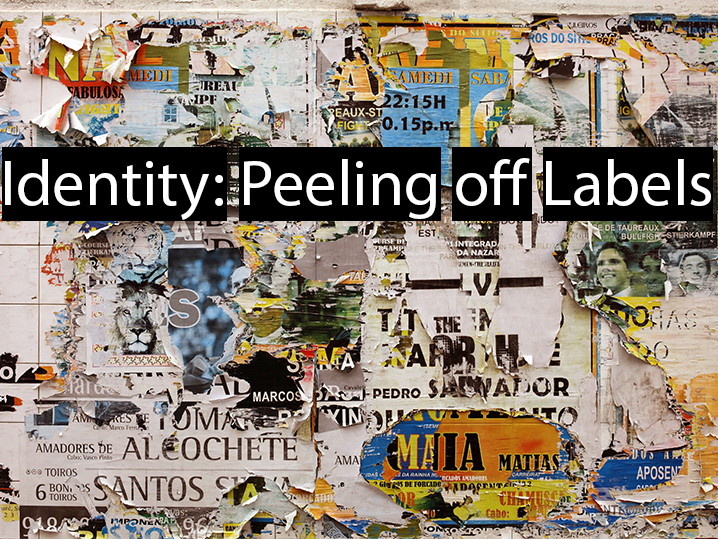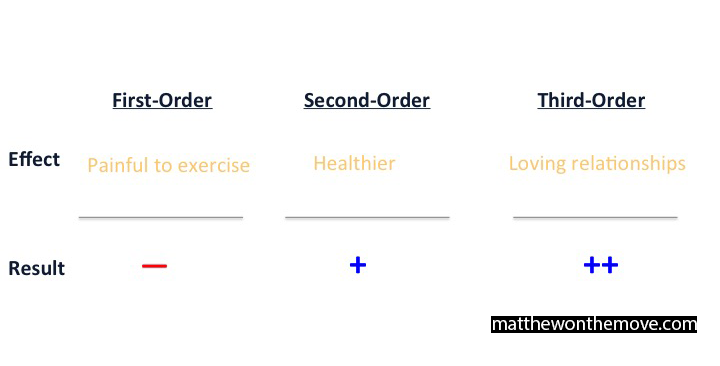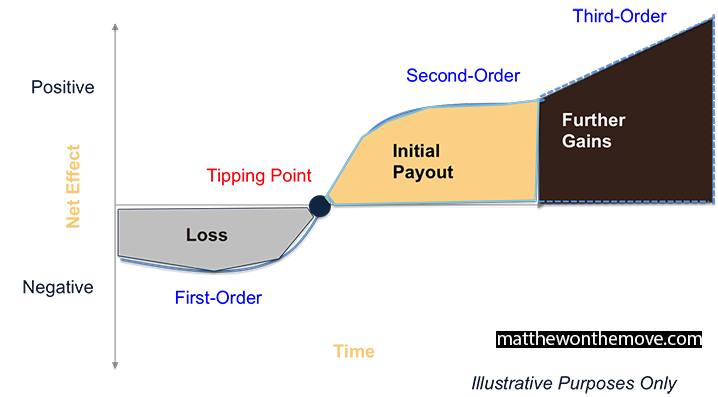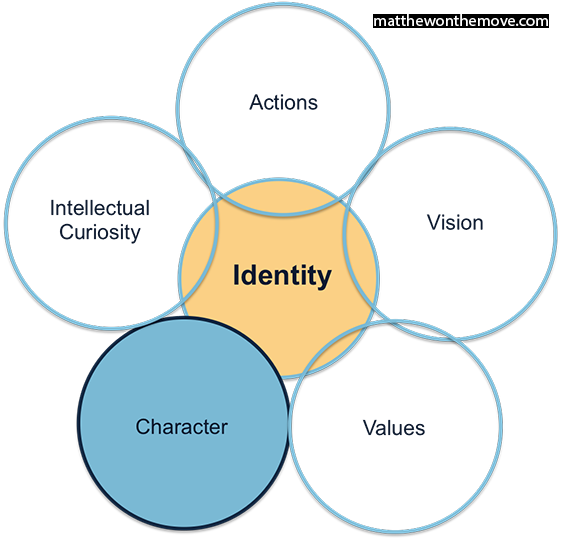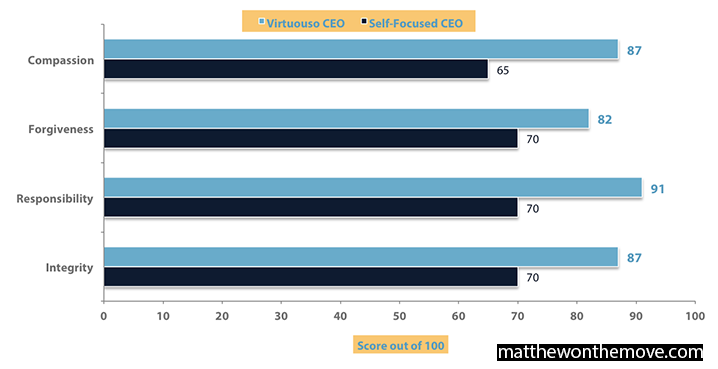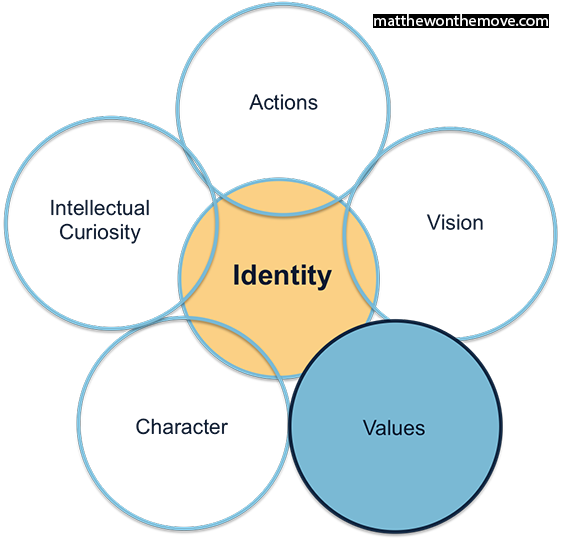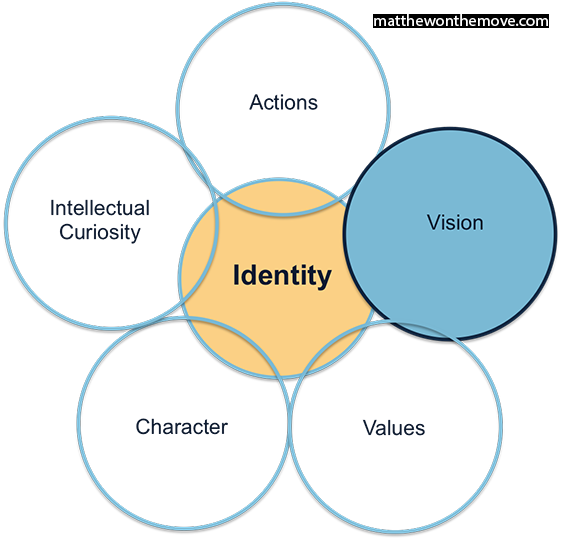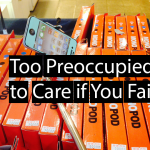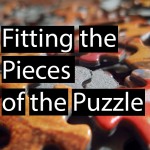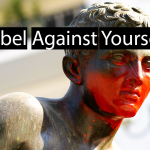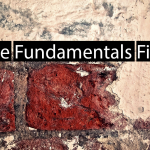Identity: Peeling off Labels
Photo attribution: Manolo Chrétien on Unsplash
Reading Time: 20 minutes
“If I wasn’t me would I still be me?” I asked my mother an umpteenth time as a young child. “If I was born as someone else would it still be me?” These pseudo philosophical questions were the start of my quest into what makes us who we are.
I was scratching at the surface of the humanistic need to find and designate our identity. Labels and group politics are what first come to mind as we are tribal in nature:
“Tribalism implies the possession of a strong cultural or ethnic identity that separates one member of a group from the members of another group. Based on strong relations of proximity and kinship, members of a tribe tend to possess a strong feeling of identity.” (Source)
We are predisposed to overly focus on the differences between us rather than those similarities that bind us together. We live to compartmentalize and categorize with labels; it’s indeed part of human psychology to define and pigeonhole others as we are pattern seekers wishing to make sense of the world. At first glance, these labels would appear to be the hallmarks of identity, but that would be an illusion. My thesis is that there are in fact universal cornerstones that are the basis for our distinct individuality.
What are these unique traits of our identity, and are these predetermined or can we dictate them as life unfolds? And if we can fashion our identity, what are the unit inputs and how can they be molded? In striving to answer these questions, I do my best to deconstruct implications and argue that we each can shape our identity based on the five dimensions of actions, intellectual curiosity, character, values, and vision. We are more than the external appearances or hereditary features with which we are born, and we should aim to peel off these labels to avoid misjudging the identity of ourselves and others. By doing so, we escape limited thinking in favor of independent reasoning for uninhibited freedom of thought and decisions, thereby altering the tangent of our lives.
Table of Contents
“Who Am I?”
Nature vs. Nurture
More Than What’s On Paper
Actions
Intellectual Curiosity
Character
Values
Vision
The Human Mosaic
“Who am I?”
We classify people into squares, triangles, and circles during our encounters. We write narratives of others just as we do ourselves to structure and formulate an identity. These are heuristics of our brain to make sense and organize the stimuli that we receive: good, bad; black, white.
Storytelling, then—fictional or nonfictional, realistic or embellished with dragons—is a way of making sense of the world around us. (…) “Life is incredibly complex, there are lots of things going on in our environment and in our lives at all times, and in order to hold onto our experience, we need to make meaning out of it,” Adler says. “The way we do that is by structuring our lives into stories.” (Source)
Storytelling is the easy and comfortable socialization method that’s hard-wired into our brains to fit neatly into a tightly wound worldview that prevents confusion or any cognitive dissonance that may run counter to stereotypes.
We Are All Shapes
Source: Matthewonthemove.com
In turn, we mistake these “externals,” such as the outward documents that make up our passport, our birth certificate, or our physical qualities for the “internals,” or the authentic descriptors of our identity. It is instinctive to latch onto attributes that are tangible and visible. We seek ways to identify ourselves as an essential desire of human nature. Yet these are not often confined to a vacuum as life involves countless complexities. The difficulty lies in getting past the external social markers based on initial appearances. I usually don’t surpass the first line of defense, especially after living in Asia for a decade where labels and status symbols are relied upon in all walks of life — from business cards to university names and fashion brands. But I’m occasionally catching myself when I’m too quick to rush to conclusions about someone’s identity. Varied angles of observation from friends and family have helped break the habit of reflexive reactions.
More broadly, I would maintain that these judgements from labels are not fully encompassing of what constitutes an individual nor of who we really are. It is the invisible — our thoughts and mindset that drive our actions — which matter in the realest sense of who we become. From my own travels worldwide, I have come to realize that what the majority of us yearn for is stability, employment, intimacy, and comfort at our deepest levels. We wish to be recognized, succeed, procreate, provide, love, and matter.
Nature vs. Nurture
So we may be born with innate characteristics — height, skin color, gender, appearance — and acculturated or raised in certain respects — language, religion, tradition — with differing societal constructs — nationality, ethnicity, personality type — but these are not the definitive factors of our livelihoods. They may place us within certain bounds and set us on a course, like a boat in the water, but we are not rudderless. Our station is analogous to such a vessel: We may not be able to change the direction of the wind, but we can determine how we catch it and which way our sails take us. We are all in motion with elasticity in our identities wherein we steer the rudder consciously and continuously.
You did not choose your:
1 birthplace or ethnicity
2 skin color
3 birth parents and family
4 birth gender or languageHowever, you can choose to live a recommendable life by being:
1 kind and generous
2 honest and humble
3 grateful and optimistic
4 respectful and forgiving— Vala Afshar (@ValaAfshar) December 1, 2017
More Than What’s on Paper
Real identity is a function of accomplishment resting on a body of work. It is not predestined based on genetics or heredity or nature. Identity is not given, it is earned over time and through consequential behavior. At its very nucleus, identity boils down to the essentials of a person beyond “what’s on paper” in a CV or autobiography. Past transitory circumstances or inborn traits of a person.
Ultimately, it is the dimensions of actions, intellectual curiosity, character, values, and vision that offer a more accurate definition of the constituents of identity. It’s worth defining and then decomposing these notions in the sections ahead to uncover their relevance in our lives:
- Actions: the set of realized behaviors and execution, impromptu and planned, in active and passive functions.
- Intellectual Curiosity: convictions that we hold dearly in unison with the agility of thought and mind to seek out facts and truths. And the mental inclination to modify our views once the situation calls for such a pivot.
- Character: makeup of personality, temperament, and orientations.
- Values: our set of standards for morality, virtues, and relative merits.
- Vision: outlook towards ambitions of the future and our forward-looking view as a destination.
The Dimensions of Identity
Source: Matthewonthemove.com
Actions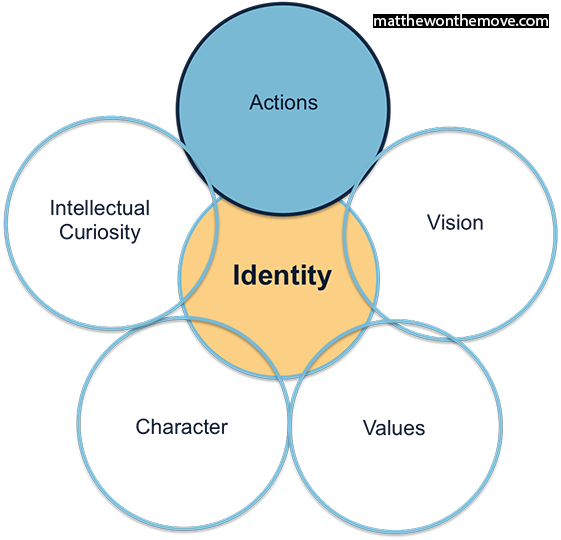
Source: Matthewonthemove.com
“The risk of a wrong decision is preferable to the terror of indecision.” – Maimonides
“There’s a difference between knowing the path and walking the path.” – Tony Hsieh
One important lens through which we form our identity is via a consequence of individually accumulated micro-decisions strung together to form a macro-picture. One’s station in life is not predetermined nor is it fixed, instead it can edge along varying trails. Small permutations accumulate along axes for first, second, and third order consequences.
I didn’t ponder about it much in the past, but everything we do matters. Whether that is taking action actively or what may seem to be not taking action (passively). As we’ll see in “Values,” all implicit and explicit actions are truly a reflection of ourselves and our identity.
Consequences have additional consequences down the line on a range of primary, secondary, and tertiary effects, or “orders.” Let’s take a concrete example to make this concept more relatable:
- First order: It’s painful to exercise for 3-6 months (-);
- Second order: I am healthier for 6-12 months (+);
- Third order: I am in a loving relationship with myself and others for a lifetime (++).
Visualizing Cause-Effect Ripples
Source: Matthewonthemove.com
Reaping What You Sow
Source: Matthewonthemove.com
When done properly, there is a front-loaded loss that eventually turns into a positive effect at a tipping point with increasing stamina over time. What I have failed to notice in the past is that one decision is the origination of a succession of events that have yet to occur in the future. Free will and destiny aside, one’s starting point places them on a route propelled forward towards permutations that unfold in time. This triggers a chain reaction of events that hold partial weight in dictating outputs, but are still malleable enough to be modified in the course of transmission.
Decision-Making Tree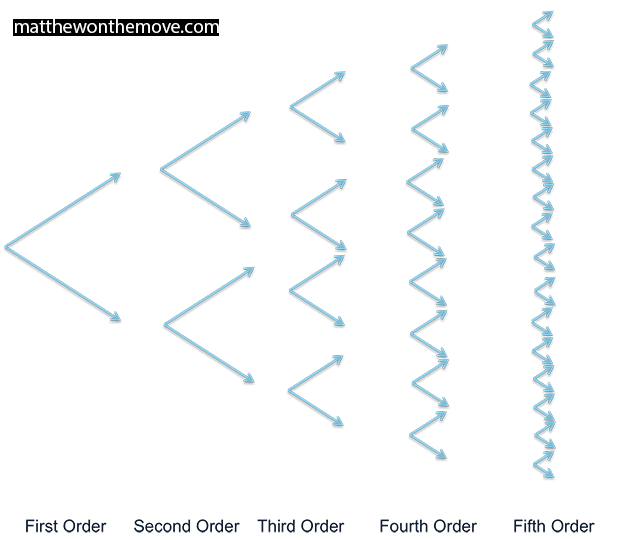
Source: Matthewonthemove.com
The graph of small tree changes of permutations from one end to another illustrates a series of choices, as opposed to a simple one-off decision. Much as in how these permutations map out to an atlas that direct intentions towards an objective (see “Vision”), our identities follow in the same sequence. We are not in static states of being, and should make the switch to embrace kinetic motion through action.
As illustrated, the nodes expand out to a larger set of possibilities. The directionality implies that after each decision there is a trade-off in terms of time that can never be reclaimed. But it does not signify that one is unable to move laterally to a different location in the chain of linkages. On the contrary, there is always a choice to take action directionally.
Willful Actions at Each Juncture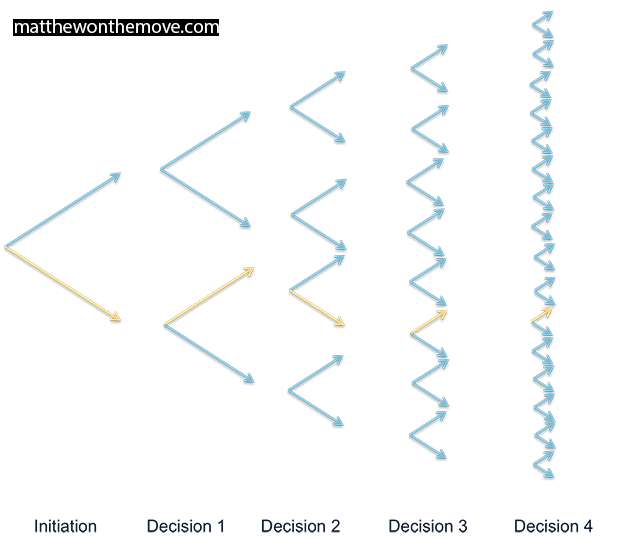
Source: Matthewonthemove.com
Like branches of a tree, or water streaming out from a river, fingers of possibility spread out into the universe (“potential energy” as is termed in physics). These are not dominos that fall invariably in a row, instead they are deliberate actions/decisions at specific forks. We can’t relive and re-do our actions, but we are endowed with the chance to decide upon our present and future course of behavior. And that is where identity resides. Pragmatically speaking, an associate with whom I worked gave me the following mental model in evaluating event actionability:
“Will this be important in an hour? In a day? And how about in a week? In a month? In a year?”
The alarms go off at the week to month mark for him. I found such reflections to be a powerful reframing exercise to pause and reconfigure our thinking and inform what point is appropriate for action.
In my eyes, intentions only mean so much and go so far. At some point, you have to take action that goes above rhetoric. Identity is likewise not conditioned on preordained status. Identity is what we choose to become, not who we have been born into. And actions are the difference-maker in the physical world.
Intellectual Curiosity
Source: Matthewonthemove.com
“I have no special talent. I am only passionately curious.” – Albert Einstein
“Curiosity is, in great and generous minds, the first passion and the last.” – Samuel Johnson
How do I interpret intellectual curiosity? It’s a mixture of critical thinking, agency over opinions, and cognitive independence to go against the grain. The ability to seek out truth and hold onto the humility of self-doubt that we can be (and frequently are) wrong.
“Your brain loves consistency. It builds a worldview like we build a house. (…) Just remember that your worldview isn’t a perfect house that was built to last forever.” (Source)
The mightiest gift one can receive is to learn how to think and be curious. As the statement goes, “Give a man a fish and you feed him for a day; teach a man to fish and you feed him for a lifetime.” The significance of intellectual curiosity is hard to overstate:
“The power of curiosity to contribute not only to high achievement, but also to a fulfilling existence, cannot be emphasized enough. (…) In recent years, curiosity has been linked to happiness, creativity, satisfying intimate relationships, increased personal growth after traumatic experiences, and increased meaning in life. In the school context, conceptualized as a “character strength,” curiosity has also received heightened research attention. Having a “hungry mind” has been shown to be a core determinant of academic achievement, rivaling the prediction power of IQ.” (Source)
Intellectual curiosity is the mental disposition and willingness to learn for stretch goals on which the pillars of our worldview are constructed in our opinions and elementary ideas. It’s the thrust of intellectual curiosity that carries us forward in terms of tangible outputs to getting stuff done (“Actions”)!
There is no avoiding the fact that intellectual curiosity is a refining process that unfolds over our lifetime with attitude as a central facet in all that we do. Applied intellectual curiosity can incrementally mold beliefs and help them evolve in light of new information or from new exposure, even however brief:
“This is how we see it: as human beings, we spend most of our lives functioning in states of lower consciousness, where what we are principally concerned with is ourselves, our survival and our own success, narrowly defined.
However, at rare moments, when there are no threats or demands upon us, (…) we have the privilege of being able to access the higher mind – what neuroscientists call our neocortex, the seat of imagination, empathy and impartial judgement. We loosen our hold on our own egos and ascend to a less biased and more universal perspective, casting off a little of the customary anxious self-justification and brittle pride.
In such states, the mind moves beyond its particular self-interests and cravings. We start to think of other people in a more imaginative way.” (Source)
The Lightbulb Burns Bright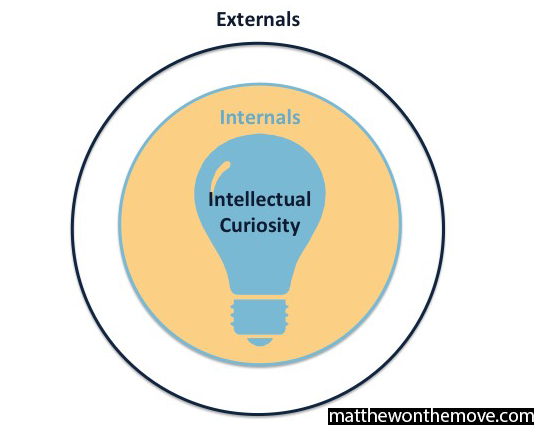
Source: Matthewonthemove.com
It is only by reaching for our higher state of consciousness that we obtain the benefits of the advanced mental faculties we possess. Intellectual curiosity drives us to realize this level of thinking internally above the transient external noise. Our ability to think for ourselves and find truth is at the heart of how we grow and mature into ourselves as a vital aspect of the development of our identity.
Character
Source: Matthewonthemove.com
“I have a dream that my four little children will one day live in a nation where they will not be judged by the color of their skin, but by the content of their character.” – Martin Luther King, Jr.
“Character isn’t something you were born with and can’t change, like your fingerprints. It’s something you weren’t born with and must take responsibility for forming.” – Jim Rohn
Character is a blend of ethics and integrity to stand up for something and act when no one else is watching. While character is an abstract term in a practical setting, there are surveys based on questionnaires that can be utilized to quantify such criteria. For instance, these factors may end up informing character traits on whether a leader is “virtuoso” (cares for others) or “self-focused” (cares for oneself). Chief executives have been rated on integrity, responsibility, forgiveness, and compassion as proxies for character to tease out whether financial returns can be approximated between virtuoso or self-focused personas. Coincidentally enough, and perhaps unsurprisingly, virtuoso CEOs deliver better financial results as measured in terms of return on assets as referenced in the HBR article “Measuring the Return on Character.” It pays to have a backbone:
“The researchers found that CEOs whose employees gave them high marks for character had an average return on assets of 9.35% over a two-year period. That’s nearly five times as much as what those with low character ratings had; their ROA averaged only 1.93%.”
All In It Together
Source: Measuring the Return on Character, KRW (HBR)
Moreover, character is not fixed in stone: “If Kiel’s experience (and his clients’) is any indication, character isn’t just something you’re born with. You can cultivate it and continue to hone it as you lead, act, and decide.”
History will judge us on how we cope with our lows and in times of distress. It is during these difficult moments that underlying character and personality traits are revealed. In calm waters, all boats are sturdy as all appears normal and we are reassured. It is only when the storm arrives that we can discover the structural integrity of the ships to see what they are made up of. Everyone can be enthusiastic and full of vitality when things are going well. But how do you deal with misunderstandings, crises, or external shocks? Do we resort to our selfish proclivities? Slip into narrow-mindedness and inward-looking behavior? Fall back into patterns of past?
Or do we strive to do and be more? Do we fight back on our natural propensities and knee-jerk visceral feelings? Do we rise to the occasion?
It’s easy to immediately react toward situations as opposed to pausing and reflecting. It is tempting to give in to our first emotions that resurge in addition to base impulses. To fall into the cycle of short-sightedness of our lizard brain of past. To apologize later rather than presently push back and act accordingly in-time. To get angry and frustrated, which ends up self-sabotaging ourselves as opposed to disassociating and remaining stoic in the face of challenge by taking the higher road. The mechanism of self-control is how we can achieve as an important indicator of our character, as mentioned in the New York Times: “Study after study has linked self-control to achievement in a wide range of areas, including personal finance, healthful eating and exercise, and job performance.” There have been numerous occasions where I’ve had to bite my lip and grit my teeth that ended up being beneficial in hindsight, and many more incidents where I would’ve liked to have practiced more self-control on the spot.
It is our intellectual curiosity that permits us to enhance our character. And I would put forth that the strength of our character is precisely where divergence takes place as the true separator in successfully exerting autonomy over our identity.
Values
Source: Matthewonthemove.com
“One of the great arts in living is to learn the art of accurately appraising values. Everything that we think, that we earn, that we have given to us, that in any way touches our consciousness, has its own value. These values are apt to change with the mood, with time, or because of circumstances. We cannot safely tie to any material value. The values of all material possessions change continually, sometimes over night. Nothing of this nature has any permanent set value. The real values are those that stay by you, give you happiness and enrich you. They are the human values.” – George Matthew Adams
“Try not to become a man of success, but rather try to become a man of value.” – Albert Einstein
The principles stemming from fundamental morals such as altruism, generosity, mercy, compassion, honesty, integrity, and empathy comprise our values. What is believed to be ethical and correct. Where the line is drawn in the sand. The set of things that we endorse, tolerate, or reject — whether we accept it, change it, or leave it — as the final menu list of choices to select across environments.
The course of our decisions, as seen in the element “Actions,” dictates our values. And a non-choice is a decision in and of itself. I still have trouble wrapping my mind around the concept that a non-decision is actually a choice in and of itself. As written in the MIT Sloan Management Review, “Whether we think about it or not, values guide our everyday behavior, even the most mundane choices.”
We can extrapolate our identity from action, but non-action is also indicative of our value sets. Passive action is indeed still action — just because it is implicit does not mean that it is not an intended choice. On the contrary, they are both one in the same as different sides of one coin.
While values can be associated for an organization, at the individual level they must be formed independently and represent what priorities you assign as part of who you are. Core values are deeply rooted beliefs for which we classify and attribute foundational convictions. They are intimately intertwined with who we are in the truest sense. Each and every decision pertains to values, and resultantly to our identity:
“All decisions — whether judged highly ethical, grossly unethical or anywhere in between — are values-based. That is, a decision necessarily involves an implicit or explicit trade-off of values.” (Source)
And this has been proven through fascinating research on Alzheimer patients as reported in the Scientific American:
“Fortunately, science appears to suggest that being robbed of one’s memory does not equate with being robbed of one’s identity. A new study has found that “who one is” is largely defined by one’s moral behavior, and not by one’s memory capacity or other cognitive abilities.”
The foremost quote from the Scientific American article in relation to values & identity is the following: “It appears that it is not our intelligence or our knowledge of the past that defines us, but instead our moral behavior. Essentially, identity is not what we know, but what we stand for.”
These results remind me of the eulogy speech to commemorate the life of my grandmother, which brings to home how I am trying to embrace the notion of “eulogy virtues” to help inform my values. As explained in a Ted Talk of David Brooks, “The eulogy virtues are the ones that are talked about at your funeral — whether you were kind, brave, honest or faithful. Were you capable of deep love?
And there is a tug-of-war between value motivations in the self-interested and altruistic domains that we all must grapple with:
“Cultivating the social emotions maximizes both our “résumé virtues” (those that underlie professional success) and our “eulogy virtues” (those for which we want to be remembered). In nudging the mind to be more patient and more selfless, they benefit everyone whom our decisions impact, including our own future selves. In short, they give us not only grit but also grace.” (Source)
I have increasingly started to ask myself, “What speech will people give at my funeral?, or “How will I be remembered and described?” These questions help sharpen our center of attention in the here and now for later. Our legacy is effectively an everlasting expression of values that we live out each and every day as an inseparable component of our identity.
Vision
Source: Matthewonthemove.com
“Hard-work is overrated, Judgement is underrated. Which direction you go is more important than the force you apply.” – Naval Ravikant (Source)
“It isn’t where you came from; it’s where you’re going that counts.” – Ella Fitzgerald
Just as velocity is composed of the variables speed and direction, the overarching line of our lives is dictated in large part by the destination towards which we strive to reach. Vision keeps us through the thick and the thin, the highs and the lows, as it is the end-point towards which we’d like to proceed. It’s where we strive to attain. Vision is the compass guiding us to our proverbial North Star. Otherwise said, “Vision provides the emotional glue that binds a multi-faceted, ever-changing individual to a long-term reality.”
In this light, which avenue is more desirable: from A to B or from B to C?
Twists and Turns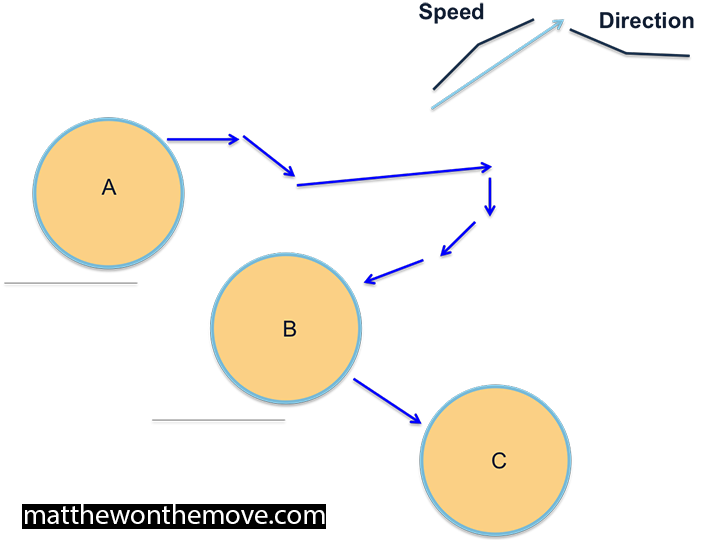
Source: Matthewonthemove.com
How do we characterize the above illustration?
- A to B: full of hurried bursts of speed towards somewhere only to circle back in smaller increments. Velocity is uncontrolled.
- B to C: a straight surge from B to C. Less speed but highly directional and efficient. This is the preferred route.
We may overly emphasize the significance of the arrow in past deeds, while it is the present and future that are the genuine drivers that can be harnessed for long-term success. There is no question that compound time activities are vital for present-day leverage. However, it’s not who you were a decade ago that is the reason for who you are today. In a similar fashion, it is not the qualifications or the prestige of your education that are the sole basis of your worth as a person. More extensively, it’s not by resting on your laurels or counting on heritage that you are destined to triumph. Entitlement leads us to nowhere.
It is your actions and your character based on values, powered by intellectual curiosity, that set us on a path shaped by our vision, which are altogether the building blocks of our identity. We have to know where we are going in order to get there, and this is how vision plays this crucial role for our identity.
The Human Mosaic
“The many factors which divide us are actually much more superficial than those we share. Despite all of the things that differentiate us – race, language, religion, gender, wealth and so on – we are all equal concerning our fundamental humanity.” – Dalai Lama
The tapestry of these five major features aggregate into our identity. We need to look beyond imagined labels that we stick onto people, for reasons of comfort, reflex, conformity, or sheer ignorance, as they are a disservice for everyone. We are not restricted to rigid notions of what constitutes who we are. Identity is created from an assimilation of distinct criteria that are separate from genetics and traits assigned by nature. There is more to us than what meets the eye. I firmly and unapologetically believe that identity follows this logic: we are infinitely greater than a collection of fragmented and dissociated parts.
In the same vein, here are several key self-reflections that I’m attempting to interweave into my daily life:
- Actions: What actions are you taking and are they acceptable? How do the consequences measure on differing time-scales?
- Intellectual Curiosity: How are you expanding your mind to open up new horizons of thinking? What are you learning and how can you apply these lessons?
- Character: How do you treat others and give back, especially for those who can do nothing for you? How would others describe you and what you stand for behind closed doors?
- Values: What is your value statement and how are you living out these ideals? What kind of individual are you and what do you stand for? How will you be remembered at your funeral?
- Vision: In what direction are you taking your life and what or where do you aspire to reach? Why is it that place and how will you get there?
The routine questions we rely upon in conversations more often than not end up revealing little about someone or something as they are flat, one-track queries that fail to encompass the intricacies and nuances of the individual spirit. But that doesn’t stop us from making sweeping judgments about our conversation partner from these scant details. We form our own opinions from little to no comprehensive sets of information. I do it to varying degrees every day, as do we all.
Instead of asking the traditional and predictable “Where are you from?” or the “What do you do?,” a more revealing and instructive line of questioning would be: “What do you stand for?,” “What is it that you believe in?,” “What is your passion?,” or “What do you wish to accomplish with your life?” From there, try to then fit the pieces to produce perpetual win-win relationships.
We should not let our imagined barriers and assumptions lead to misunderstandings and prevented progress. Peel off labels to work on those foundational areas that form our truer and more precise unique identity for enduring betterment to our collective lives.
What labels do you rely upon and how are you addressing your core identity determinants of actions, intellectual curiosity, character, values, and vision? They matter more than many (including myself) recognize or realize. The contours of our identity may very well dictate the sum total outcome of our lives.
So who are you?
